
849 Naval Air Squadron was a squadron of the Fleet Air Arm, the Air Arm of the British Royal Navy. It was formed during the Second World War as a carrier based torpedo-bomber, unit, flying missions against Japanese targets in the Far East. Its service since the Second World War has been as an airborne early warning squadron, flying fixed winged Skyraiders and Gannets from the Royal Navy's fixed wing carriers from 1952 until 1978, and airborne early warning Sea King helicopters from 1982 to 2018.

Royal Air Force Brawdy, or more simply RAF Brawdy, is a former Royal Air Force satellite station located 6.3 miles (10.1 km) east of St Davids, Pembrokeshire and 9.8 miles (15.8 km) south west of Fishguard, Pembrokeshire, Wales. It was operational between 1944 and 1992; it was used by the Royal Air Force and the Royal Navy (1946–1971), before the site was turned over to the British Army and renamed Cawdor Barracks.
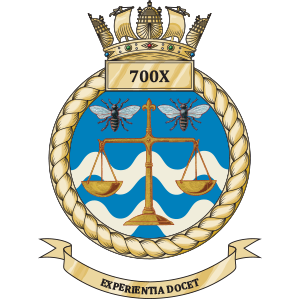
700 Naval Air Squadron is an experimental test squadron in the Royal Navy’s Fleet Air Arm.
Royal Air Force Heathfield, or more commonly RAF Heathfield, sometimes known as RAF Ayr/Heathfield due to its proximity to Glasgow Prestwick Airport, which was also used by military flights, is a former Royal Air Force station. It opened in April 1941 as an airbase for day and night fighter squadrons. In September 1944 it transferred to Fleet Air Arm control and commissioned as HMS Wagtail. The Royal Navy paid off the airbase in March 1946 and it was reduced to care and maintenance. The United States Air Force used it for storage between 1951 and 1957, with the designation USAAF Station 570.
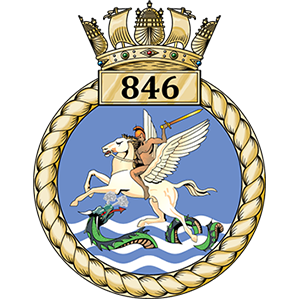
846 Naval Air Squadron is a squadron of the Royal Navy's Fleet Air Arm.

847 Naval Air Squadron is a squadron of the Royal Navy Fleet Air Arm. It operates AgustaWestland Wildcat AH.1 helicopters and provides armed reconnaissance and light transport support to 3 Commando Brigade Royal Marines. Along with 845 and 846 naval air squadrons, it forms part of the Commando Helicopter Force. The squadron was re-formed from 3 Commando Brigade Air Squadron on 1 September 1995.
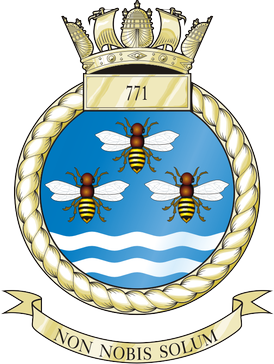
771 Naval Air Squadron of the Fleet Air Arm was formed on 24 May 1939 at Lee-on-Solent as a Fleet Requirements Unit with 14 Fairey Swordfish TSR biplanes. The Squadron carried out various exercises with ships and provided towed targets for naval air gunners and was decommissioned on 22 March 2016.

815 Naval Air Squadron is a Royal Navy Fleet Air Arm squadron flying the AgustaWestland Wildcat HMA.2 helicopter and is the Navy's front line Wildcat Naval Air Squadron. The squadron is based at RNAS Yeovilton in Somerset. The squadron is capable of carrying out multiple roles such as: counter-narcotics, anti-piracy, Above Surface Warfare (ASW), search and rescue, disaster relief and flying and engineering training. In the early 2000s, the Navy said that the squadron was largest helicopter squadron in Europe.
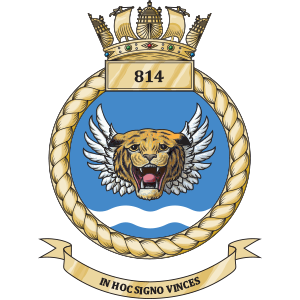
814 Naval Air Squadron or 814 NAS, nicknamed the Flying Tigers, is a squadron of the Royal Navy Fleet Air Arm. It is currently equipped with the AgustaWestland Merlin HM2 anti-submarine warfare helicopter and is based at Royal Naval Air Station (RNAS) Culdrose in Cornwall. The squadron was formed in December 1938 and has been disbanded and reformed several times.

The Royal Air Force Search and Rescue Force was the Royal Air Force organisation which provided around-the-clock aeronautical search and rescue cover in the United Kingdom, Cyprus and the Falkland Islands, from 1986 until 2016.

824 Naval Air Squadron is a Royal Navy Fleet Air Arm squadron based at RNAS Culdrose and currently operating the AgustaWestland Merlin HM2 Operational Conversion Unit. It trains aircrew in Anti-Submarine warfare and Airborne Surveillance and Control.

819 Naval Air Squadron was a Naval Air Squadron of the Royal Navy's Fleet Air Arm.

703 Naval Air Squadron of the Fleet Air Arm of the Royal Navy was formed as a long-range catapult squadron on 3 March 1942 at RNAS Lee-on-Solent. During the Cold War, it was reformed as an experimental trials unit, and then as a helicopter training squadron. Since 2003, the squadron has formed the Royal Naval wing of the Defence Elementary Flying Training School at RAF Barkston Heath.

826 Naval Air Squadron was a Fleet Air Arm aircraft squadron formed during World War II which has been reformed several times since then until last disbanded in 1993.

737 Naval Air Squadron was a Naval Air Squadron of the Royal Navy's Fleet Air Arm. It was initially active during 1943 as an amphibious Bomber Reconnaissance Training Squadron. Reactivated in 1944 it operated as an ASV Training Unit until 1945. It was active again between 1949 and 1957. From 1959 it was the Anti-Submarine Warfare school at RNAS Portland. It operated Westland Wessex HAS.3 rescue helicopters from their land base at RNAS Portland, Dorset.
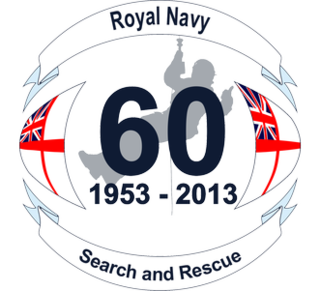
Royal Navy Search and Rescue 60 was a series of events throughout 2013 to mark the 60th anniversary of the creation of the first helicopter unit within the Royal Navy with a search and rescue role.
The History of Royal Navy Helicopter Search and Rescue has its roots in the adoption by the Royal Navy of helicopters in the plane guard role. From a purely military tasking Royal Navy squadrons came to share the provision of search and rescue SAR coverage for the United Kingdom with the Royal Air Force and commercial providers under contract to Her Majesty's Coastguard, being responsible for two sectors out of twelve. From 2015 both the RAF and the Navy will surrender the civilian SAR role to contractors operating on behalf of the Coastguard.
719 Naval Air Squadron was a Naval Air Squadron of the Royal Navy's Fleet Air Arm. It initially formed in 1944 as a Fighter Air Firing Training Squadron, at RNAS St Merryn, within the School of Air Combat. At the start of 1945 the squadron disbanded into 794 NAS. The squadron reformed in 1946 at RNAS Fearn as a Strike Training Squadron, before moving to RNAS Eglinton, where it became an Anti-submarine Training Squadron, disbanding there in 1949.
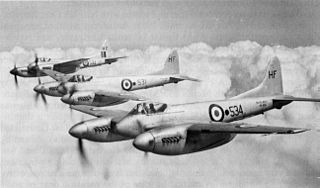
728 Naval Air Squadron was a Naval Air Squadron of the Royal Navy's Fleet Air Arm. It was formed in 1943 as a Fleet Requirement Unit, operating from airfields around the Mediterranean before settling for most of its existence in Malta.

744 Naval Air Squadron is a Naval Air Squadron of the Royal Navy's Fleet Air Arm. It was initially active in 1943, based in Nova Scotia. A second 744 NAS was formed, in early 1944, in Northern Ireland, for Merchant Aircraft Carrier training, meaning the first iteration was re-designated 754 NAS. The squadron's primary focus turned to Anti-submarine warfare training, which then further developed into trialing new submarine detection technology, ending in 1956. In 2018 it reformed as the Mission Systems and Armament Test and Evaluation Squadron.





















